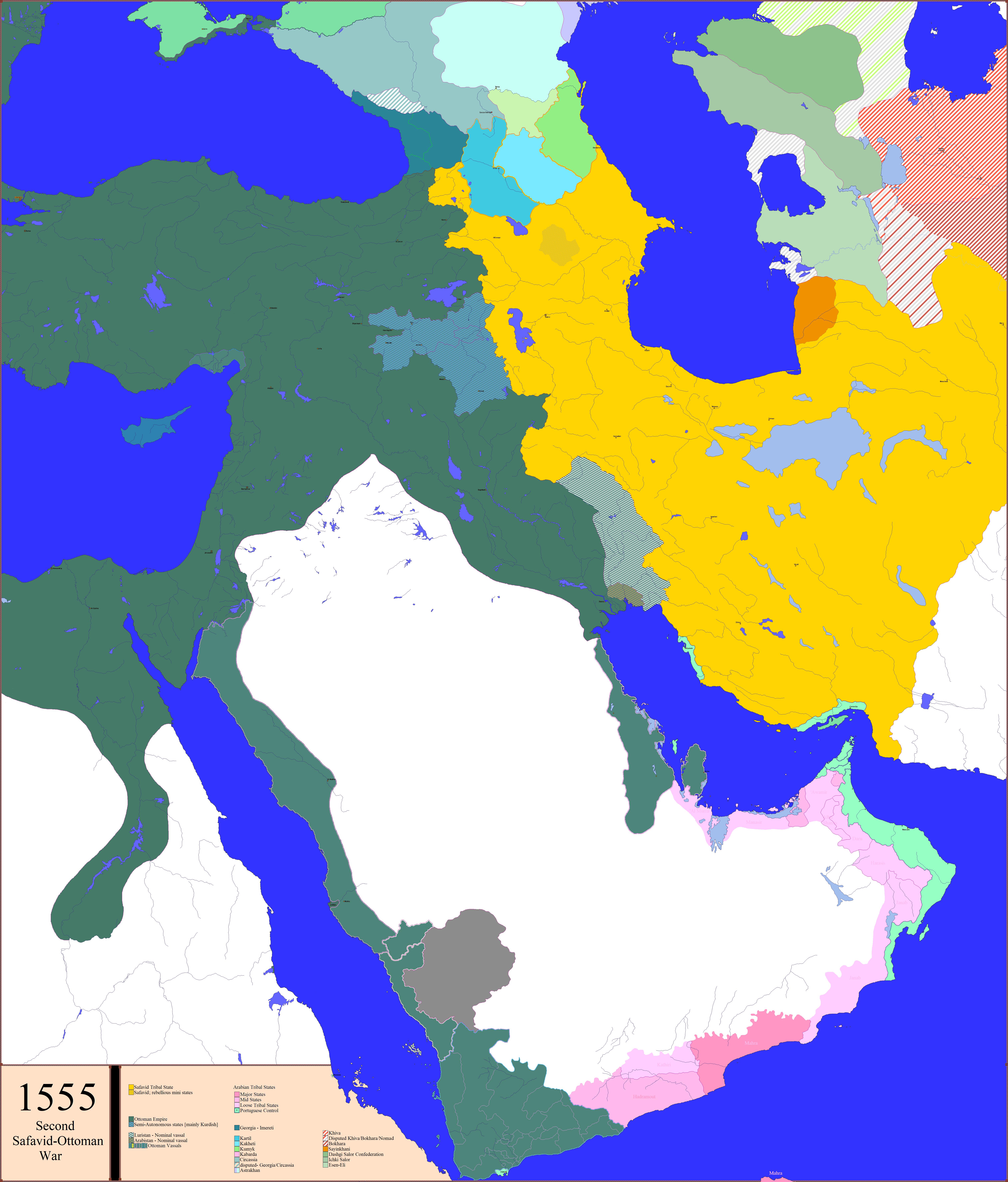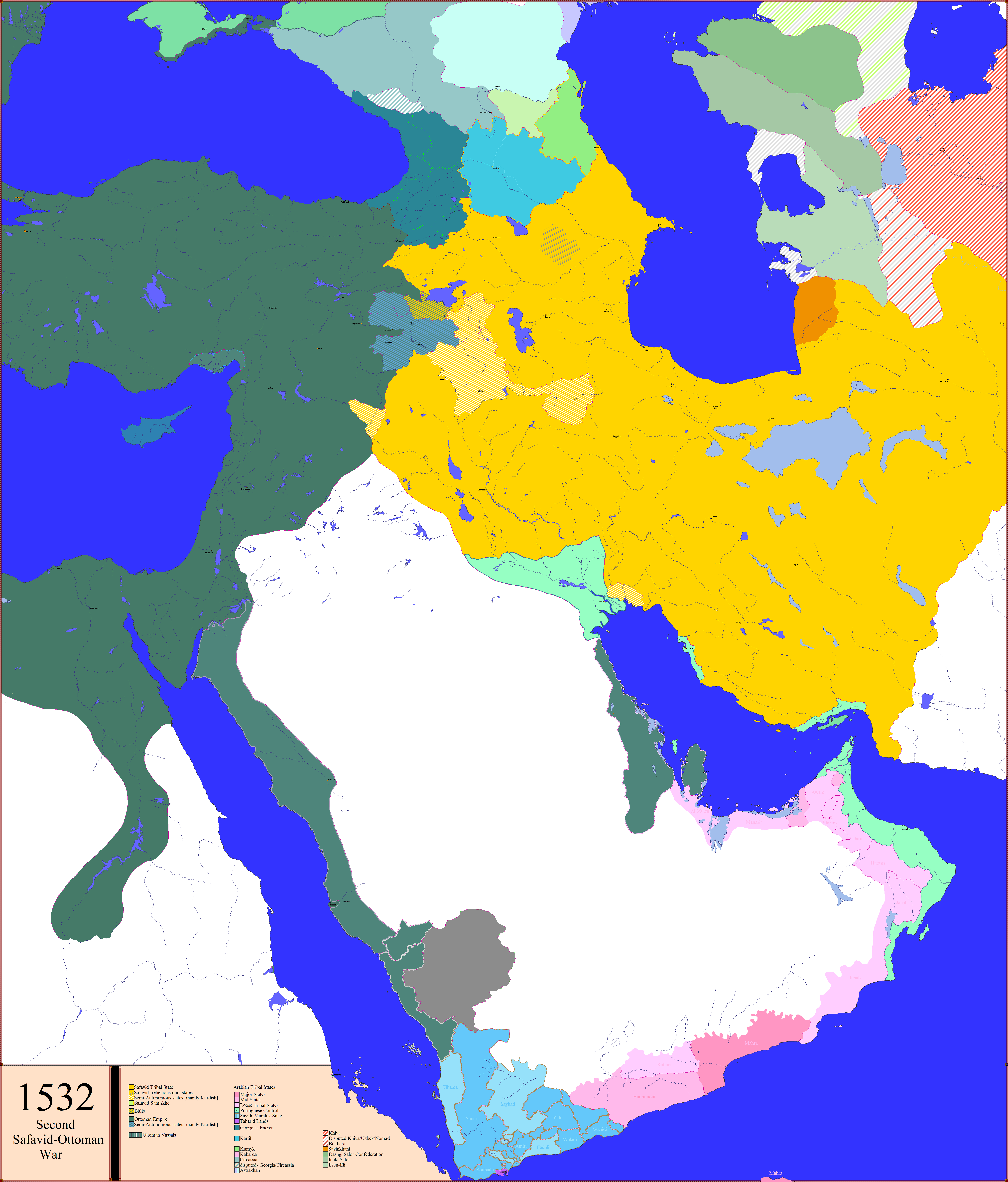HOME | DD
 BobHopeXIVRedux — E4.1555
BobHopeXIVRedux — E4.1555

Published: 2024-01-15 15:33:18 +0000 UTC; Views: 1348; Favourites: 14; Downloads: 3
Redirect to original
Description
The Third campaign - Peace of Amasya - 1553-1555Safavid attacks in 1550-1552 devastated Van and Erzurum. In 1553 The Ottomans began the third campaign against the Shah. Due to his heavy commitment in Persia, Suleiman was only able to send limited naval support to France in the, 1553, Franco-Ottoman Invasion of Corsica.
The invasion saw Tahmāsp seize the initiative. He defeated the Ottomans near Erzurum, capturing the city and also one of Suleiman's favourites, Sinan Beg.
Having initially lost Erzurum to the Shah's son, Suleiman recaptured the city, crossed the Upper Euphrates and laid waste to parts of Persia. The Shah's army continued its strategy of avoiding the Ottomans, leading to a stalemate from which neither army made any significant gain.
In 1554 Ottoman forces raided Azerbaijan, capturing Yerevan, Karabakh and Nakhchivan.
With both sides heartily sick of their inability to prevail, diplomats approached Suleiman in camp at Amasya. Suleiman returned Tabriz, but kept Baghdad, lower Mesopotamia, the mouths of the Euphrates and Tigris, and part of the Persian Gulf coast. The Safavids retained its northwestern territories in the Caucasus, Dagestan and Azerbaijan. Armenia and Georgia were divided equally between the two, the western parts of Armenia and Georgia, western Samtskhe and Imereti, going to the Ottomans, whilst the eastern parts of Armenia and Georgia stayed in Safavid Iranian hands, Kartli, Kakheti, and eastern Samtskhe being recognized as Safavid possessions. Erzurum, Van, and Shahrizor became buffer zones.
Tahmāsp, nevertheless, transferred his capital from Tabriz to Qazvin, which was further away from the border, as a precaution.
Relations between the Empires improved as a result of Religious agreements within the Peace Treaty. When a succession dispute arose in the Ottoman Empire, Suleiman's favourite wife, Hürrem Sultan, wanted her son, Selim, to be the next sultan. Selim was an alcoholic and her other son, Bayezid, demonstrated far greater military ability. The princes quarreled and Bayezid rebelled but was forced to flee abroad to avoid execution.
Bayezid arrived in Iran, in 1559, and Tahmāsp gave him a warm welcome. Suleiman was eager to negotiate Bayezid's return, but Tahmāsp rejected both promises and threats until Suleiman compromised with him in 1561. In September that year, Tahmāsp and Bayezid enjoyed a banquet in Tabriz until Tahmāsp pretended he received news that Bayezid was engaged in an assassination plot.
An angry mob gathered, Tahmāsp had Bayezid put into custody, allegedly for his own safety. Tahmāsp then handed Bayezid over to the Ottoman ambassador and, soon, Bayezid was killed by his father’s agents.
Related content
Comments: 2

👍: 0 ⏩: 1

👍: 0 ⏩: 0

























